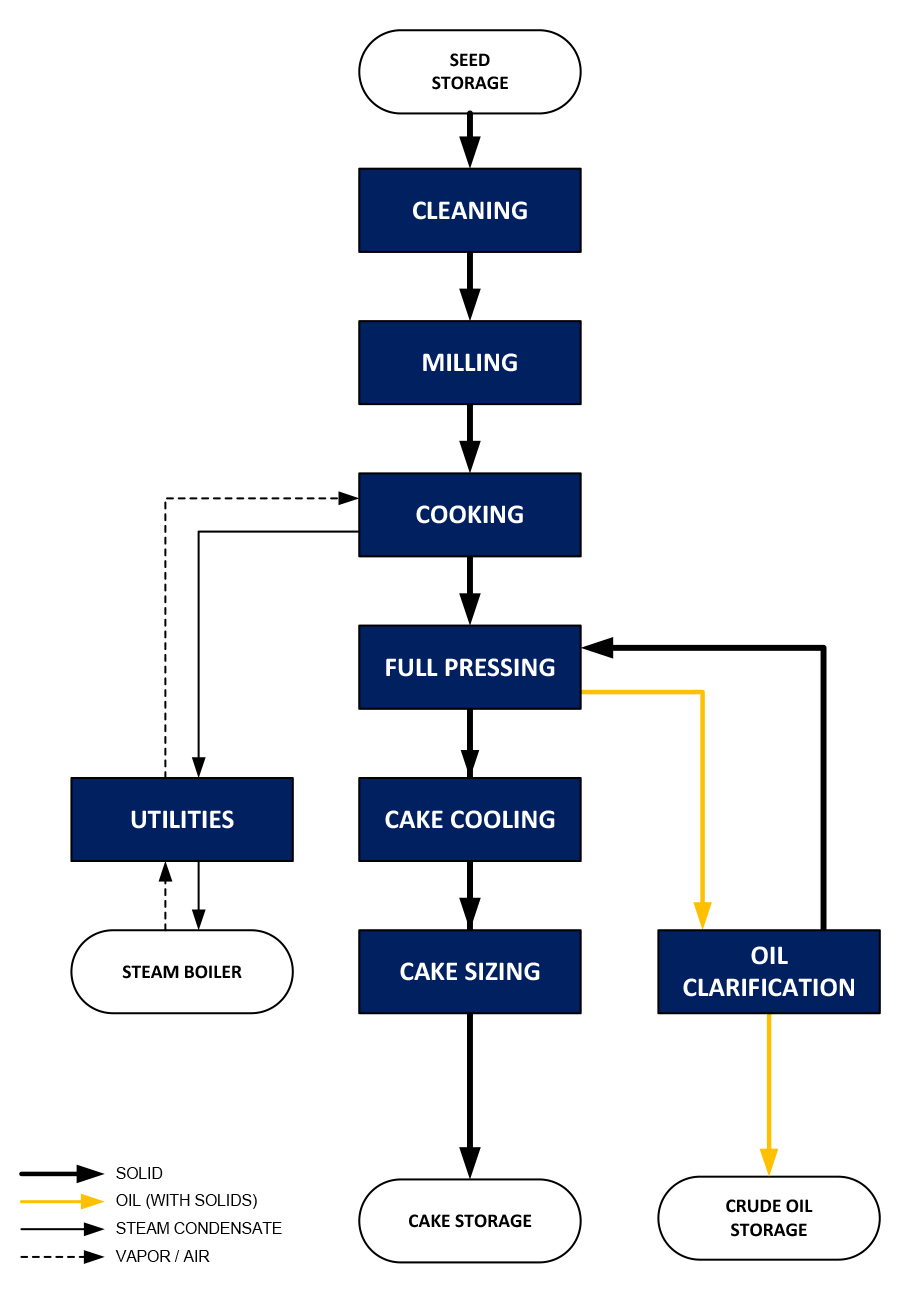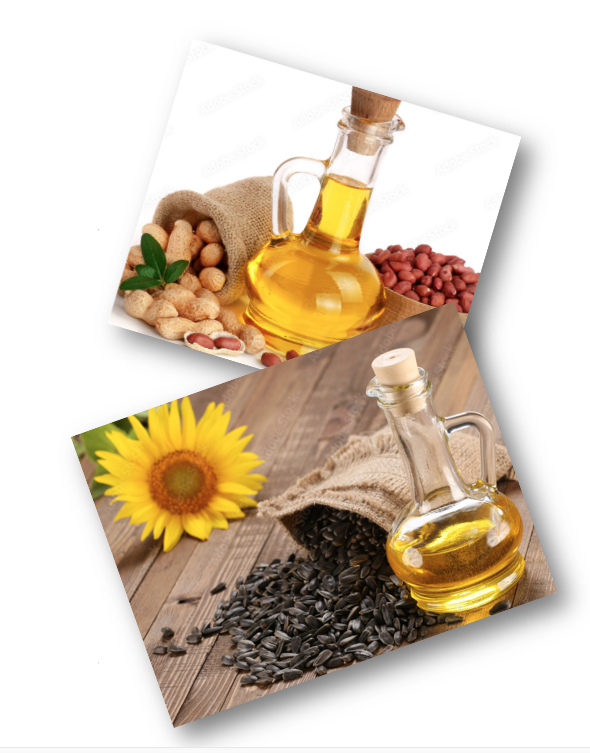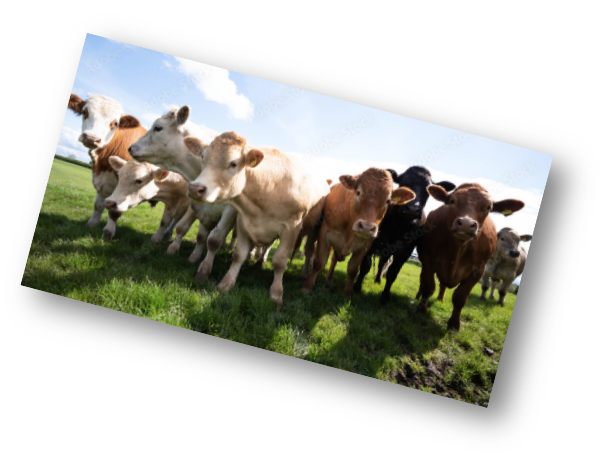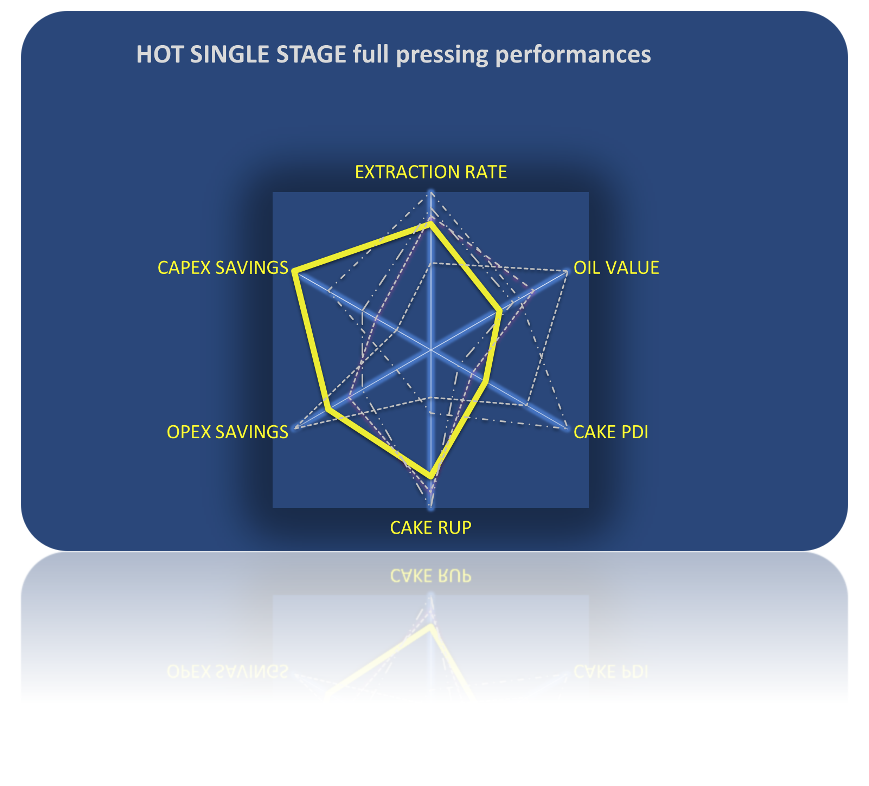 Process selection criteria
Process selection criteria
Selection of the right process route for Full Pressing is based on several criteria, related to both the economics (CAPEX and OPEX analysis, products YIELDS) and the specificity of the products (CAKE and OIL).
The key market reason to select Hot Single stage full pressing is to produce, at lower operating cost, a high-quality cake, with relatively high RUP (Rumen Undegradable Protein) content. The process can be used for all oil extraction applications, but the cake will be particularly suitable when used for cattle feed. The RUP, or by-pass protein, are not digested by rumen bacteria and are, therefore, available for further digestion and absorption by the animal small intestine. It is of utmost importance for dairy cow milk productivity.
Other selection criteria are:
Oil Value: The good oil extraction rate makes the hot pressing suitable in most cases when oil yield is priority. However, further increase in oil yield is possible with Hot Double Stage full pressing. In both cases, due to cooking, some nutritional components of the oil may be affected or degraded. For best oil quality, see Cold Single Stage Full Pressing.

Cake value: As a result of cooking and pressing, residual oil in cake is typically lower than 10% and protein content relatively high. Protein is partially denatured during the cooking and the pressing does affect the PDI quite significantly (however no more so than for solvent extracted meals). The meal will have an increased RUP content and will be well suited to ruminant feeds. If higher PDI meal is desired with lower residual oil, then consider Extrusion + Full Press.
OPEX Saving: due to cooking stage, the Hot Single Stage Full Pressing does have a consumption of steam. However, it is less energy demanding than Hot Double Stage Full Pressing, giving some OPEX savings based on steam and power consumption.
CAPEX Saving: Hot Single Stage Full Pressing is the cheapest process solution still giving reasonable oil extraction rate and good cake quality. Generally, a hot single stage process gives the best balance of an affordable and simple to run plant, with good oil extraction rates.
Process configuration
The seed from storage may contain up to 2% foreign material. The purpose of the cleaning process is to remove as much of foreign material as possible. An optional weighing process can be foreseen to get an accurate inventory of the material being sent through the seed preparation process.
Milling is aimed at reducing inlet raw material into smaller size particles to reduce the work done in the Press. It is required for the single pressing of many seeds types. When Milling is required, it may be achieved in a hammer mill, or cracking rolls. For the smallest and softest seed Flaking may be required. In some cases, the milling can be combined with dehulling system, generally aimed at increasing protein content on the press cake.
The Cake after prepressing should be broken or milled to increase the heat transfer rate in the subsequent cooking process. Depending on the feed material this Milling may be sufficient using a cake breaker built into the Pres Press but on certain feeds it may be achieved in a hammer mill, or cracking rolls.

Cooking is a thermal process which heats the press feed material to approximately 110ºC (230F) by indirect steam contact. It is aimed at both reducing the moisture down to 3% range and to increase the fluidization and availability of oil. Both parameters will guarantee the highest oil reclaim from the squeezing of the material into the press. DesmetBallestra offers full range of horizontal and vertical cookers design.
Full Pressing is the heart of the process. Prop
erly prepared material is fed continuously into the screw press where cellular structure of the seed is severely distorted, tearing open the cell walls. Most of the oil in the pre-pressed cake will be extracted while producing a full-pressed cake with both integrity of shape and porosity, ideal for downstream cake cooling. DesmetBallestra offers a full range of ROSEDOWNS screw presses with specific arrangement for full pressing, for all kind of seeds, all the capacities.
Cake cooling is needed to remove excess of heat from the cake coming out of the press. Cooling is achieved through convective and evaporative heat transfer from cake to air pass
ing through the cake layer on a fully counter-current flow. After the Cake Cooler, the cooled cake has a temperature within the range of 20 to 40°C (68 - 104F), and a moisture contains below 3%.
Oil clarification is required as it is inevitable that there will be a level of residual solids in the extracted Press oils. The Oil clarification is a two-step process that separates solid matter from the Press oil. The first separation step removes most coarse solids by screening or settling. Then, a second separation step removes the small fines and impurities from the oil by filtration using a hermetic leaf filter or, in large plants, by a centrifugal decanter.

